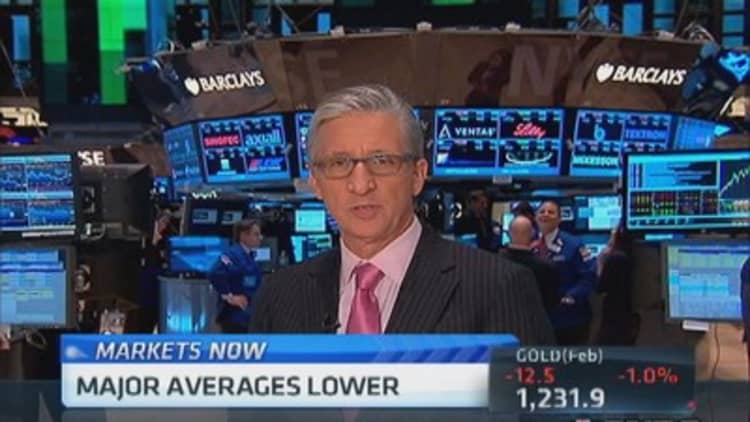U.S. businesses took a pause from repurchasing their own shares—also known as stock buybacks—in the first quarter of 2014, according to the U.S.-focused research tracker TrimTabs, which now believes surging stock markets might have a tough time pushing even higher.
"Corporate actions have turned less supportive of stock prices," TrimTabs Chief Executive David Santschi said in a research note on Sunday. "The decline in the volume of buybacks is a cautionary sign, as buyback volume and the have a high positive correlation."
Many of the corporate America's' biggest names have decided to buy back their own stock in recent years. These buybacks happen when firms buy their own shares trading on the stock exchange, reducing the portion of shares in the hands of investors. They offer a way to return cash to shareholders - along with dividends - and usually coincide with a company's stock pushing higher as shares get scarcer.
Read MoreNear record for S&P dividends and share buybacks
Many analysts see stock buybacks as being a key driver behind record highs for U.S. stock markets rather than any expansion in company earnings. In some cases, firms are borrowing cash to buy back their shares, thus taking advantage of ultra-low interest rates set by the U.S. Federal Reserve.
The final quarter of 2013 had cash-laden S&P 500 companies spending $214.4 billion on share buybacks and cash dividends, according to preliminary results released Wednesday by S&P Dow Jones Indices. The figure was second only to the $233.2 billion spent in the third quarter of 2007, according to the research company. Howard Silverblatt, a senior index analyst at S&P Dow Jones Indices said he expected this trend of greater shareholder return to continue throughout 2014.
But Sunday's data from TrimTabs shows that new stock buybacks in first quarter of 2014 fell to their lowest in five quarters. This was despite a rush of stock repurchases by U.S. banks on Wednesday after an annual check-up by the Fed which tested if banks had a large enough capital buffer to keep lending through another financial crisis.
Read MoreBlackRock CEO warns top US firms—don't overdo dividends, buybacks

Eleven financial companies announced $25.8 billion in stock buybacks in the past week according to TrimTabs, which meant new stock buybacks totaled $134.4 billion in the first quarter through Thursday, March 27. Buyback announcements were well below the interim peak of $195.5 billion in the second quarter of 2013, it said.
Gemma Godfrey, the head of investment strategy at Brooks Macdonald told CNBC via email that a reduction of these buybacks, at a time when the Fed is winding down quantitative easing support, could leave markets vulnerable.
"With the stock market continuing to scale new heights, whereas political rhetoric and confidence was enough to drive these moves previously, there is more pressure on fundamentals to justify the rally," she said.
Read MoreBig buyback year ends with a bang, but news is not all good
Godfrey believes that investor patience is starting to wear thin in certain areas of the market. However, taking a broader look at the recent surge in stock markets, she added that any fall in indexes would be from a high base and would not be a "trough."
"With (interest) rates, even after an initial rise within the next year, far from pre-crisis levels, it will remain an attractive strategy for corporates and investors alike," she said.
—By CNBC's Matt Clinch


